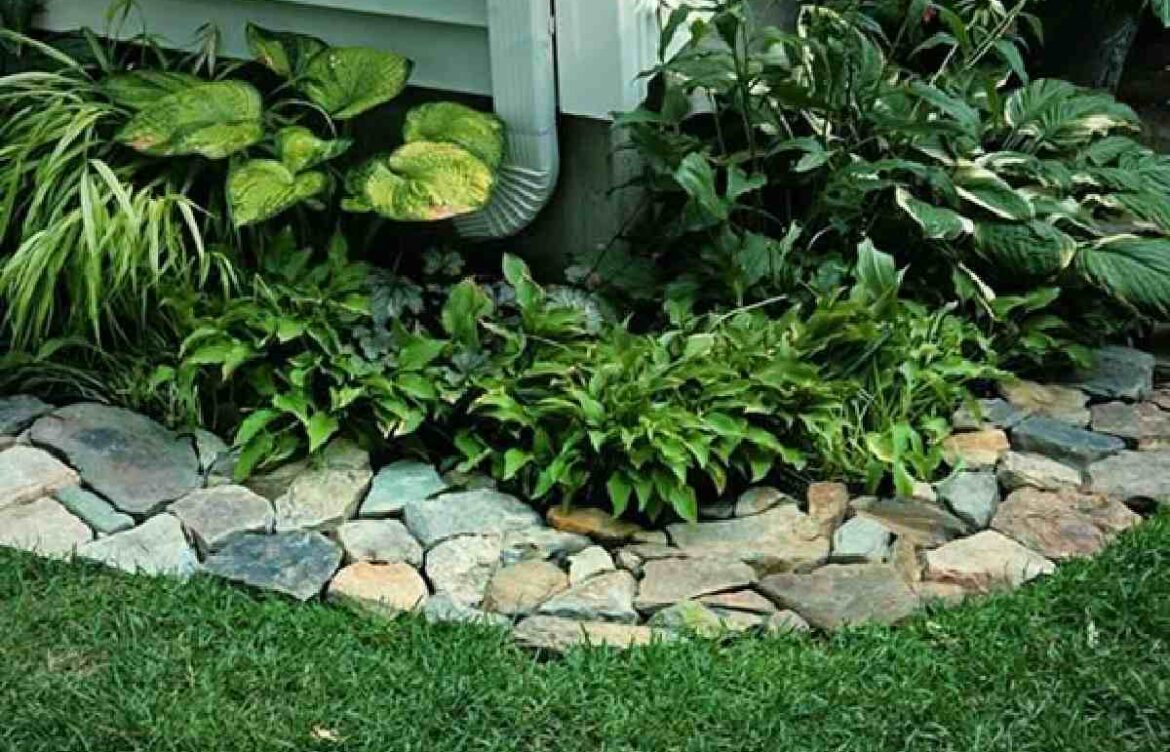
Front Yard Landscaping Ideas With Rocks
Front Yard Landscaping Ideas With Rocks – Transforming your garden into a beautiful, peaceful landscape requires creativity and innovative thinking. One idea is to include rocks in your landscaping design to add texture, depth, and interest. From rock mosaics to rock garden beds, there are various ways to use rocks to enhance their beauty and make them stand out.
In this post, we will discover the various types of landscaping rocks available, their cost, and the best landscape ideas with rocks that you can implement. We will also discuss designing a landscape with rocks, tips for maintaining it, and the pros and cons of using rocks in your landscaping design. So, let’s dive in and discover how to create a stunning outdoor space with rocks!
What is a “Rock Landscape”?
A “rock landscape” is a landscaping design or garden that utilizes rocks prominently as a prominent part of its curb appeal and structural composition. The scale and style of rock landscapes can vary, but they often use rocks of varied shapes, sizes, and colors to create a visibly appealing and harmonious front yard.
Types of Landscaping Rocks
Several types of rocks can provide depth and variety to your landscaping project. Each array has distinct properties that might improve the overall appearance of your outdoor space.
River Rock

Using river rocks in your Landscaping offers a distinctive texture and charm to your outdoor environment. These adaptable, smooth stones are available in various hues and sizes, making them a perfect choice for any garden design. Use them to define paths, fire pits, or garden beds; they require less attention than mulch. Consider natural light and the size of your space when choosing the proper size and hue for a great design.
Pea gravel

Pea gravel is a flexible and inexpensive landscaping rock ideal for walkways, driveways, and flower bed decoration. It matches any garden design and requires little upkeep. Pea gravel is available in beige, gray, and white. It is widely available at most landscape retailers, making it an affordable option for rock landscape ideas.
Lava rock

Lava rock is good for drainage, erosion control, and water conservation since it blends utility and aesthetics. It comes in various hues, enhances any garden, and is simple to maintain. It would be best to avoid sharp edges in settings where youngsters play. Lava rock is low-maintenance and visually pleasing and serves various valuable functions for rock garden ideas.
Flagstone

Flagstone enhances both the practicality and the aesthetic appeal of your garden. Because of its smooth surface, it is ideal for walks, patios, and lounging spaces. It comes in various colors and textures that help in striking contrast and is suitable for high-traffic areas or outdoor furniture. It can create retaining walls or stepping stones in garden beds. Flagstone is a low-cost landscape option when adequately maintained.
Decomposed granite

Decomposed granite is formed from crushed granite and comes in gold, gray, and brown hues. It is inexpensive and straightforward to install. Its porous properties make it ideal for garden beds, pathways, and roadways. Because of its low upkeep and adaptability, it can remain utilized with larger rocks or plants. Because of its smooth feel, it is ideal for children’s play spaces.
Slate

With its natural beauty and durability, slate lends refinement to any landscape. It’s ideal for a pathway, retaining wall, waterfall, or accent. Its fine-grained texture and diverse color palette complement plants and other landscape elements. Select slate based on size, shape, color, and texture to match your style.
How much does Rock Landscaping cost?
Rock landscaping costs vary greatly based on criteria such as rock type, project size, and labor costs. A small to medium-sized rock landscaping will typically cost between $1,500 and $4,500. Larger projects may cost $5,000 to $15,000 or more. A detailed quote from a landscaping professional is essential for an exact cost based on your individual needs.
What are the advantages & disadvantages of Landscapes with Rocks?
Many homeowners choose to use rocks for Landscaping. Employing this material in your landscape design has various advantages and disadvantages. Before selecting whether a rock landscape is perfect for you, carefully examine the advantages and downsides.
Advantages
There are various benefits to using rocks in your landscape design. They provide texture and depth to your garden, are long-lasting, and require little upkeep. Rocks help with drainage and erosion management, especially on slopes, adding a natural, complementing aspect. Because of the range of sizes and colors available, they are popular among homeowners and garden enthusiasts.
Disadvantages
However, rock landscaping poses specific difficulties. The weight of boulders might make installation more complex, resulting in shifting and tripping hazards. Rocks absorb heat, potentially rising temperatures and damaging plants and comfort. Depending on the quantity required, certain rock kinds can be costly. Despite these obstacles, rock landscaping may improve your garden and outdoor living space with the correct installation and upkeep.
Conclusion
Front Yard Landscaping Ideas With Rocks – Rock landscapes provide your outdoor space texture, intrigue, and color. They require little upkeep and may tolerate extreme weather conditions. While the cost of rock landscaping varies according to the type of rocks used and the size of the project, it is an excellent investment because it can increase the value of your house. Several innovative methods exist to use rocks in your landscape design, ranging from rock cairns to rock arches.
